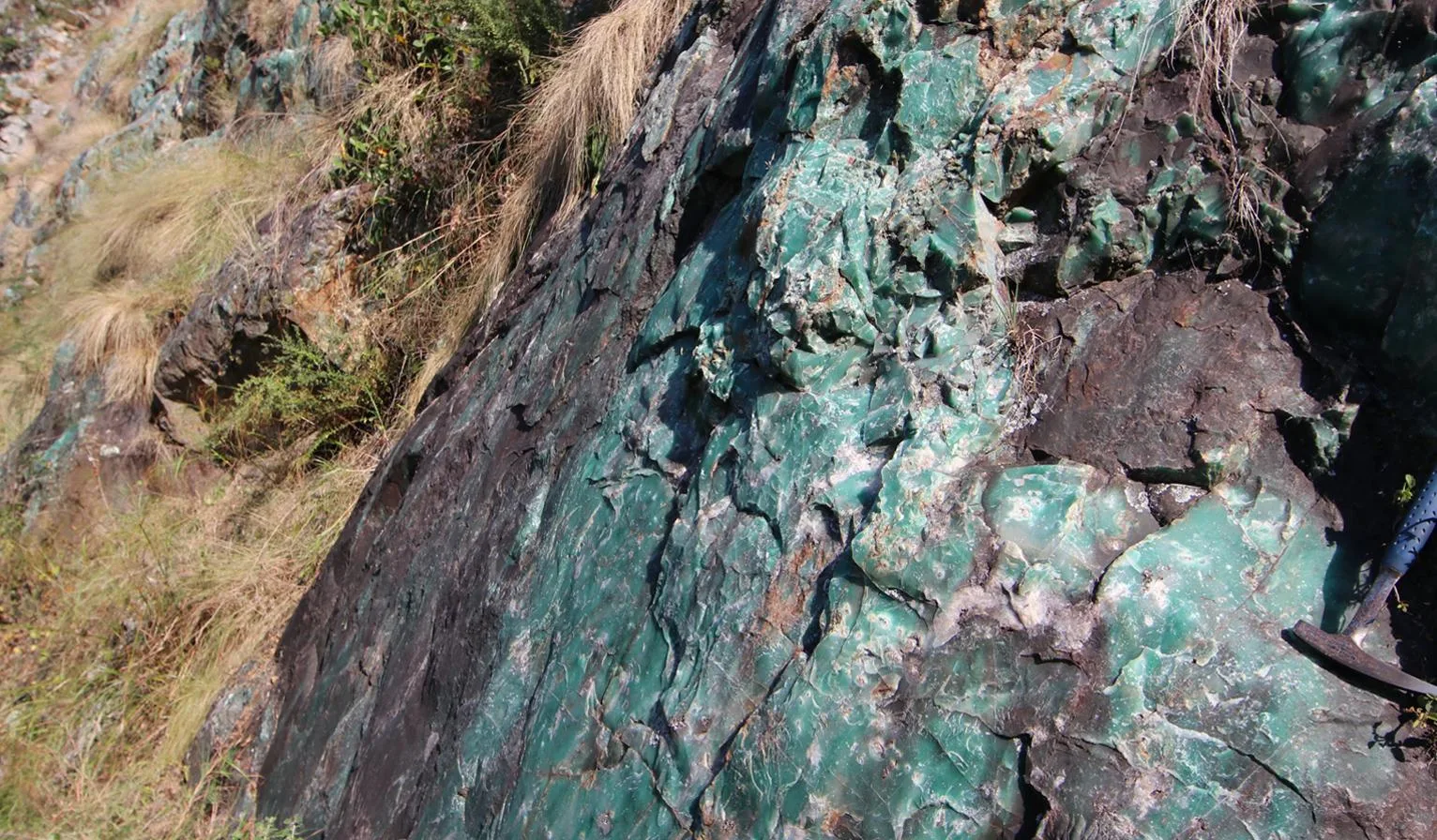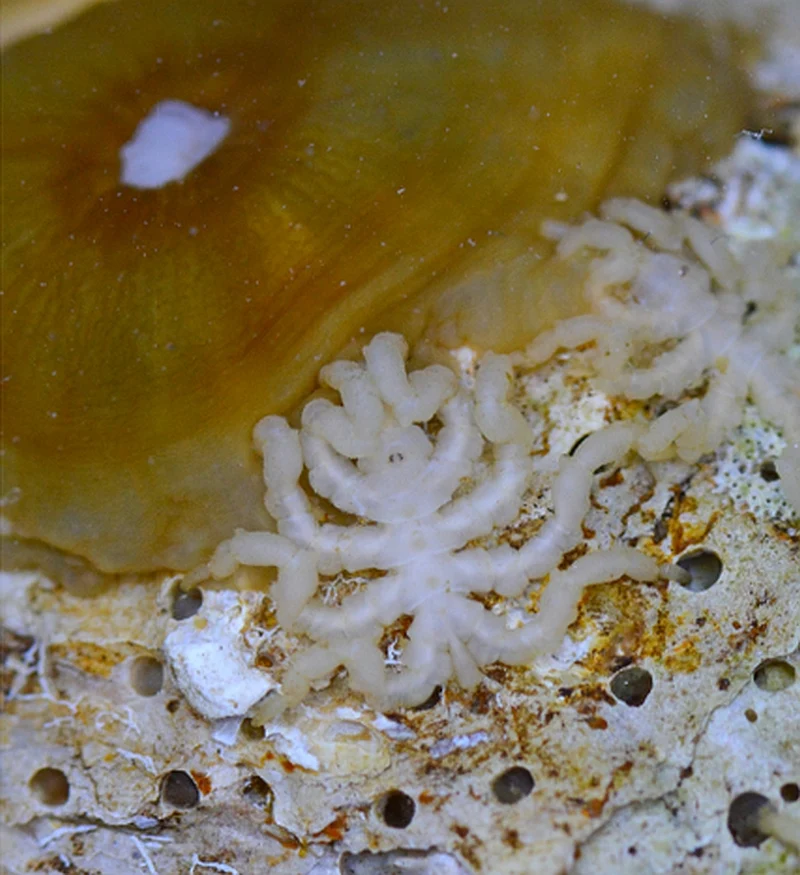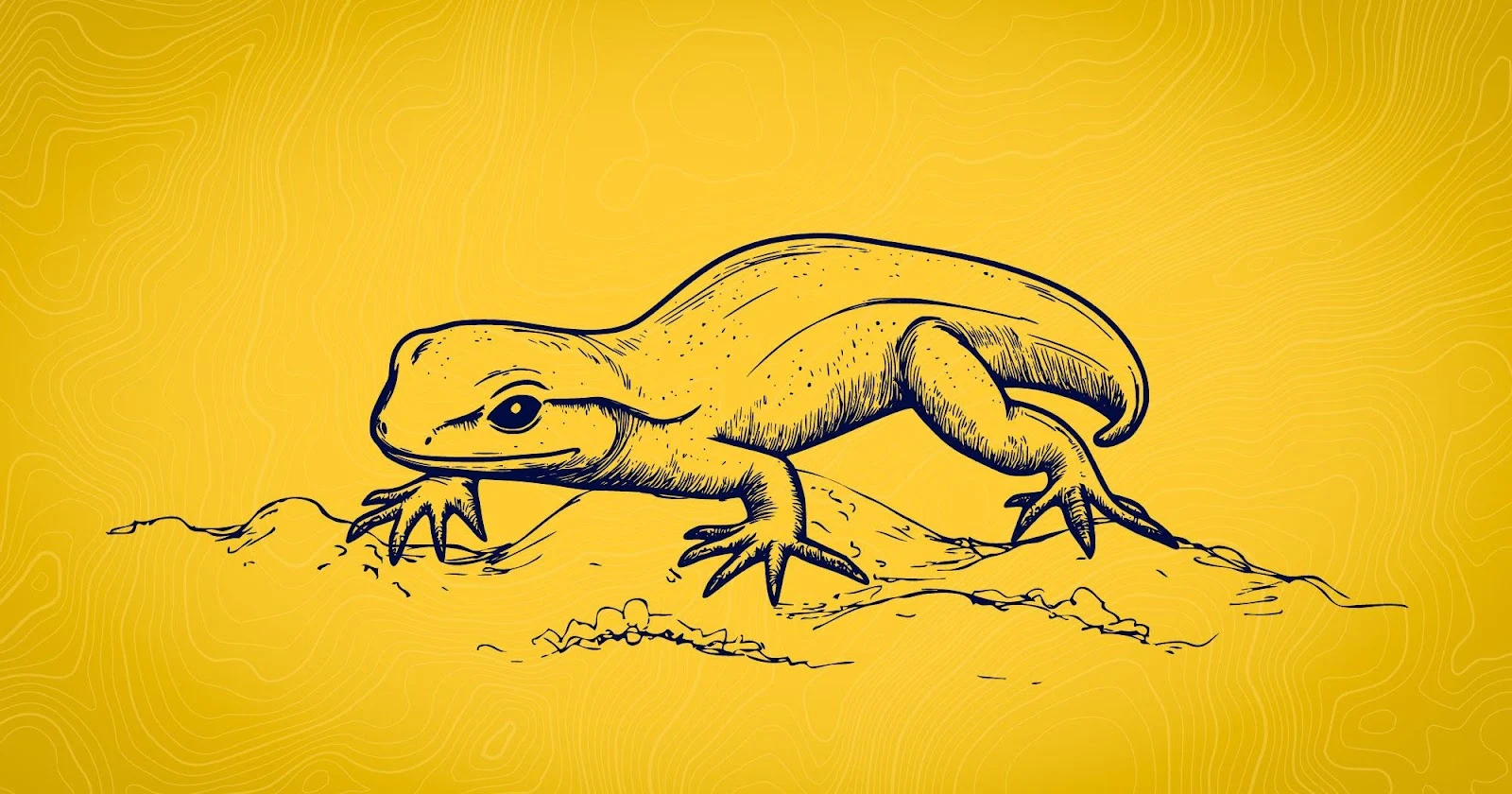[left caption]
[right caption]
Where did Stone Age hunter-gatherers get the raw material for their tools? | University of Tübingen

The Mgwayiza Valley in Eswatini

The Mgwayiza Valley in Eswatini
300,000 years before the Bronze Age pastoralists who later shaped the origin myths found in the Bible set their tales, South African hunter-gatherers were undertaking long journeys to a valley in what is now Eswatini (formerly Swaziland) in search of the right colour of stone for their tools.
This is the conclusion of a study led by Dr Gregor D. Bader from the Department of Early Prehistory and Quaternary Ecology and the Senckenberg Centre for Human Evolution and Palaeoenvironment at the University of Tübingen. The stones they collected included red jasper, green chalcedony, and black chert. Researchers examined artefacts from four sites: Hlalakahle, Siphiso, Sibebe, and Nkambeni.
Their findings have just been
published in the Journal of Archaeological Science.
What information do you have on the geology of the Mgwayiza Valley, Eswatini?
Here’s what current geological and environmental research indicates about the Mgwayiza Valley in Eswatini:
- Ancient Cratonic Bedrock
- The valley lies within the Barberton Greenstone Belt, part of the Kaapvaal Craton - one of Earth’s oldest, stable geological units, dating back 3.6–2.5 billion years (1).
- Bedrock comprises metamorphosed sedimentary volcanic sequences (Onverwacht, Fig Tree, Moodies series) alongside ancient granites such as the Lochiel Granite (~3 billion years old) (2).
- Landscape & Relief Formation
- Differential erosion of ironstones, quartzites, soapstones, and dolerite dykes has sculpted the region’s rugged scenery, forming commanding ridges (e.g. Ngwenya, Silotfwane) and valleys like Mgwayiza (2).
- The southern escarpment serves as a critical hydrological catchment, feeding multiple rivers (Motjane, Ngwenya, Nkomati), with ongoing open-pit mining risks to water quality and downstream systems (3).
- Green Chert Resources & Mining
- Green chert, a cryptocrystalline quartz variant, is abundant and actively mined at the head of the valley. Michael Lee Enterprises holds a controversial mining licence, while environmental assessments have downplayed both ecological and geological significance (4).
- Local EIA objections critique inadequate geological data—reports lack independent surveys verifying chert deposit size and longevity, with some geologists suggesting only a 7‑year mine life instead of the claimed 173 years (5).
- Archaeological & Scientific Value
- Geological uniqueness goes hand‑in‑hand with archaeological significance—evidence of Middle and Later Stone Age human activity exists, underscoring the valley’s cultural and lithic importance (6).
- Scientists view the region as ideal for examining early Earth crust, sedimentary processes, and early life—factors that make its preservation scientifically vital (7).
- Conservation & Risk Analysis
- As part of the Malolotja Nature Reserve (incl. Mgwayiza Range), this area is a global biodiversity hotspot. It supports rainforest gorges, abundant endemic flora and fauna, and serves as an ecological transition zone (3).
- Critics argue mining may degrade unique microhabitats, disrupt water systems, and potentially degrade the site’s eligibility for UNESCO World Heritage listing (4).
Summary
Mgwayiza Valley showcases a rare combination of ancient Archean geological formations, specific mined resources (green chert), and rich ecological and archaeological overlays. This makes it both scientifically precious and environmentally sensitive. While mining continues, environmental and geological assessments are contested, with concerns over incomplete data and potential irreversible damage.
The research is also summarised in an
official press release from the University of Tübingen.
Where did Stone Age hunter-gatherers get the raw material for their tools?
International research team from the University of Tübingen and the Senckenberg Nature Research Society finds early humans in southern Africa traveled long distances to get the right stone color
A new study has shown that as early as the Stone Age, people in Africa traveled long distances to procure colorful stone, forming the raw material for the manufacture of tools. The study was led by Dr. Gregor D. Bader from the Department of Early Prehistory and Quaternary Ecology and the Senckenberg Centre for Human Evolution and Palaeoenvironment at the University of Tübingen. The researchers investigated worked stone tools from sites up to 40,000 years old and natural rock deposits in what is now the Kingdom of Eswatini on the borders of South Africa and Mozambique, formerly Swaziland. They found that thousands of years ago, hunter-gatherers traveled between 30 and a hundred kilometers to collect certain rock materials with striking colors, such as red jasper, green chalcedony and black chert. The study has been published in the Journal of Archaeological Science.
In order to reconstruct the movements and migrations of early humans, it helps to look at entire landscapes, so the international research team included several sites with tools and potential sources of raw materials in its study. "Eswatini, with the collections of the National Museum in Lobamba, provided good conditions for this. Artifacts from numerous archaeological sites are kept there," Gregor Bader says. In their study, the researchers examined stone artifacts from the four sites of Hlalakahle, Siphiso, Sibebe and Nkambeni.
By working closely with Dr. Brandi MacDonald from the research reactor in Missouri, USA, Bader's team used neutron activation analysis to determine the origin of the stones. In this process, the stone samples are irradiated with neutrons, resulting in an interaction between the atomic nuclei in the sample and the neutrons. In this process, the resulting products and the radiation released reveal the quantitative composition of the stone sample, the elements it contains and their isotopes, which are similar atoms of different masses. The specific pattern – in research this is also referred to as a geochemical fingerprint – is characteristic of stone materials of different types and their respective places of origin. “Although the method is destructive, only tiny sample quantities are required and the results are excellent,” Bader explains. “By comparing the analysis patterns of the stone used and the rocks found in the region, we can pinpoint the origin of the raw stone.”
Preference shifts to red jasper

Natural outcrop of red jasper in the Mgwayiza Valley, Eswatini
Man-made tools made of green chalcedony and red jasper from the sites had the same geochemical fingerprint as corresponding rock deposits in the Mgwayjza Valley, 20 to a hundred kilometers away. "We have calculated whether the stones used may have been transported via the local Komati and Mbuluzi rivers. However, this could only have happened as far as Hlalakahle, and the other three sites of Siphiso, Sibebe and Nkambeni are a long way from there. Even if we assume that the hunter-gatherers took the shortest routes, we still find considerable distances between the rock deposits and the places where the stones were used. In addition, an exchange of materials with other early human groups is conceivable," says Bader. The stones were transported over long distances. "Colorful and shiny materials seemed attractive to early humans; they often used them for their tools. We can only speculate as to whether the colors had a symbolic meaning."
What is particularly interesting is the finding that color preferences shifted over time, says Bader. While black and white chert and green chalcedony were frequently used in the Middle Stone Age in Africa 40,000 to 28,000 years ago, red jasper was particularly popular in the later Stone Age around 30,000 to 2,000 years ago. “Both colors occurred close together in the same valley and in the same river deposits, so we can assume a deliberate selection of different materials at different times,” says Bader.
Publication:
Gregor D. Bader, Christian Sommer, Jörg Linstädter, Dineo P. Masia, Matthias A. Blessing, Bob Forrester, Brandi L. MacDonald: Decoding hunter-gatherer-knowledge and selective choice of lithic raw materials during the Middle and Later Stone Age in Eswatini. Journal of Archaeological Science, https://doi.org/10.1016/j.jas.2025.106302
Highlights
- We successfully traced MSA and LSA chert stone tools to their source in Eswatini using Neutron Activation Analysis.
- Green and red chert varieties were transported by hunter gatherers between 20 and up to 100 km distance.
- We observed different preferences for raw materials during the LSA compared to the MSA.
Abstract
Reconstructing past movement and mobility patterns requires a landscape-scale approach with knowledge of potential raw material sources and, ideally, multiple archaeological sites. Building on legacy collections in the Lobamba Museum in Eswatini and the identification of primary lithic raw material outcrops through landscape survey, we can provide scenarios of raw material provisioning for hunter-gatherers in Eswatini over the past 40 000 years. We used Neutron Activation Analysis (NAA) to refine the terminology as the three ‘chert’ varieties from the archaeological sites Hlalakahle, Siphiso, Sibebe and Nkambeni are more precisely described as red jasper, green chalcedony and black chert. We were able to identify the primary outcrops for both red jasper and the green chalcedony. Using a least cost path (LCP) analysis together with hydrological and geomorphometric estimates of clast transport in relevant rivers, we reconstructed potential transportation routes of raw material and infer likely provisioning scenarios. During the final Middle Stone Age (MSA), red jasper occurs rarely or is absent in archaeological assemblages, while green chalcedony and other chert variants are frequently observed. This is despite the source of red jasper occurring near the green chalcedony outcrop. During the Later Stone Age (LSA), the red jasper, and a red chert variant of unknown provenance appear more frequently, indicating different raw material provisioning choices.
1. Introduction
Reconstructing hunter-gatherer mobility is crucial to understanding human behavior, their relation and interaction with the landscape, and selective choices regarding natural resources. As stated by Close (Close, 2000, p. 50) “The act of moving is an ephemeral thing, which may or may not leave any material trace in the archaeological record. Usually, it does not“. Understanding where people obtained different types of raw materials for the production of tools or pigments, and over which distances they were transported, offers the opportunity to find these rare traces of past movements or social networks. In southern Africa, several attempts have been made using mineralogical and geochemical characterization of lithic raw materials such as silcrete (Nash et al., 2013, 2022) and earth mineral pigments (ochre) (Dayet et al., 2016; McGrath et al., 2022.1), mostly related to the Middle Stone Age (MSA ∼300 000–28 000) (e.g. Bader et al., 2022.2a, Bader et al., 2022.3b, Bader et al., 2022.4c; McBrearty and Brooks, 2000.1; Wadley, 2015). Recently, Mackay and colleagues (2021) provided a coherent macroscopic study of the Still Bay technocomplex in the Doring River catchment area, where they demonstrated that bifacial Still Bay points (∼77–70ka) from varying raw materials were regularly transported over fairly long distances between 30 and 60 km. Other than the work of Mackay et al., most studies on raw material provenance are site-specific and thus offer only a narrow window towards an understanding of human mobility, migration, and potential networks of exchange. In terms of lithic provenance studies in South Africa, there has been an almost exclusive focus on silcrete, which limits the geographic range of such studies to the Cape coastal belt where this material naturally occurs. Masia (2022.5) is an exception, offering a comprehensive analysis of different raw material varieties from Olieboomspoort Rock Shelter and Mwulu's Cave in Limpopo based on a combination of macroscopic and microscopic characterizations coupled with X-ray fluorescence, thin section petrography, and Inductive Coupled Plasma Mass Spectrometry.
The most common lithic raw materials used by prehistoric knappers for stone tool production during the MSA and the Later Stone Age (LSA ∼30 – 2ka) of southernmost Africa are silcrete, quartzite, quartz, dolerite, rhyolite and hornfels, depending on the region. Other materials such as opalines, chalcedony or jasper are often grouped under the umbrella terms chert or crypto-crystalline silicates, although the latter requires microscopic investigations. Those materials naturally occur in diverse waxy lustres, colors ranging from red, orange, and grey to black, yellow and green. These variations are driven by distinct formation processes, post depositional alterations and specific elemental concentrations. It is surprising, therefore, that these materials have not yet been the subject of geochemical provenance studies in southern Africa.
1.1. Eswatini study area
Archaeological research in Eswatini started in the 1950s with Johnny Masson conducting intensive surveys and some small-scale excavations at sites like Nyonyane Rock Shelter (Bader et al., 2021.1). Peter Beaumont conducted multiple excavations in the late 1960s, the most famous revealing the oldest ochre mine in the world, Lion Cavern (Boshier and Beaumont, 1972; Dart and Beaumont, 1969). All the material from his excavations is currently stored in the McGregor Museum in Kimberley (Northern Cape, South Africa), but the repatriation process has recently started. Between the late 1970s and 1989, David Price Williams undertook a large-scale archaeological investigation of Eswatini. He founded the Swaziland Archaeological Research Association (SARA) and conducted excavations at important sites such as Sibebe (Bader et al., 2022.2a; Price Williams, 1981), Siphiso (Barham, 1989a) and Nyonyane (Barham, 1989a, 1989.1b), as well as on multiple open-air sites (Price Williams et al., 1982). Since 2016, new archaeological investigations have been undertaken in the country by our joint research team consisting of Swazi, European, South African, Canadian, and American researchers, and SARA has been resurrected. The major achievements of this new episode of research have been the scientific curation of the Price Williams collection in the Eswatini National Museum (Lobamba) supported by the German Archaeological Institute, a re-investigation of the MSA assemblages from Sibebe in the highveld (Bader et al., 2022.2a), a large-scale ochre provenance study based on Neutron Activation Analysis (NAA), and the redating of Lion Cavern using optically stimulated luminescence (OSL) (MacDonald et al., 2024). As a direct consequence of the curatorial work in the National Museum, we have access to the assemblages from every site excavated in the country under David Price Williams.
With permission from the Eswatini National Trust Commission (ENTC), we undertook a 10-day expedition to the Mgwayiza Valley within the Malolotja Nature Reserve at the western border of Eswatini to South Africa in 2021. Following the advice of local informants, we went there to find a green chert mine representing a potential source for macroscopically similar material found in several assemblages of the Price Williams Collection, e.g. Hlalakahle or Sibebe. We found the green chert mine on the first day of the expedition, high up at the northernmost extension of the Mgwyiza Valley (Fig. 1, Fig. 2). On the third day, we found several outcrops of a red chert variety up on the cliffs of the western mountain ridge (Fig. 3). Finally, we also surveyed the Mgwayiza stream and located secondary deposits of a black chert variety in the form of big river pebbles. Based on the geomorphology of the area, the primary outcropping of this black chert can only originate from upstream. The green and red chert varieties are macroscopically distinct, and, based on our observation of the Price Williams collection, we were convinced that these materials were used at different times by prehistoric knappers. We took multiple samples from various sections on each of the chert outcrops and recorded GPS coordinates. These archaeological investigations took place at just the right time and represented the last opportunity before permission for green chert mining was granted to a commercial mining company in 2023. Today, the green chert mine has been irretrievably destroyed.

Fig. 1. Map of Eswatini and the locations of archaeological sites and lithic sources mentioned in the text.

Fig. 2. (a) View of the Mgwayiza valley; (b, c) Green chalcedony outcrop. (For interpretation of the references to color in this figure legend, the reader is referred to the Web version of this article.)

Fig. 3. (a) View of the Mgwayiza valley; (b) detail of red jasper outcrop with white quartz veins; (c) knapped materials. (For interpretation of the references to color in this figure legend, the reader is referred to the Web version of this article.)
Findings like these present a serious challenge to creationist narratives, particularly the belief that humans were created in their present form only a few thousand years ago. The archaeological evidence from the Mgwayiza Valley—showing that Stone Age hunter-gatherers in southern Africa were selectively sourcing coloured stone for tool-making around 40,000 years ago—demonstrates that
Homo sapiens were behaving in symbolically rich, cognitively sophisticated ways long before the biblical timeline would allow for human existence at all.
This kind of long-distance transport and selective use of materials reflects advanced planning, deep environmental knowledge, and cultural traditions. Such behaviours are the product of gradual cognitive evolution, not sudden appearance or divine design.
In addition, the ancient geology of the region—formed billions of years ago as part of the Kaapvaal Craton—further undermines any notion of a young Earth. These formations, and the archaeological layers associated with them, simply cannot be reconciled with claims of a global flood just a few thousand years ago or with any literal reading of Genesis.
As always, the evidence supports a world that is deep in time, shaped by natural processes, and inhabited by humans who have evolved, adapted, and innovated for tens of thousands of years. It is a story not of sudden creation, but of deep history—painstakingly uncovered, layer by layer.















































